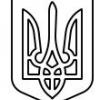Пътуванията в Римската империя
-
Последна активност
-
- 1860 мнения
- 158617 прегледa
-
- 2865 мнения
- 191587 прегледa
-
- 20 мнения
- 56 прегледa
-
Кои са ванандците и каква е тяхната връзка с българи и други народи?! 1 2
От D3loFF, in Средновековна история
- 29 мнения
- 1096 прегледa
-
Руско-украинската война 2022-2024 година. 1 2 3 4 161
От Р. Теодосиев, in Руско-украинската война 2022 година.
- 4011 мнения
- 238375 прегледa
-
-
Последно разглеждащи 0 Потребители
- No registered users viewing this page.



Препръчано мнение
Напиши мнение
Може да публикувате сега и да се регистрирате по-късно. Ако вече имате акаунт, влезте от ТУК , за да публикувате.